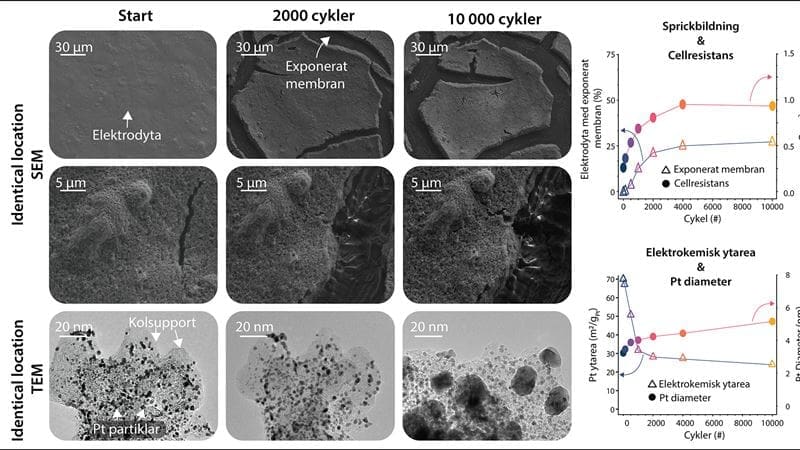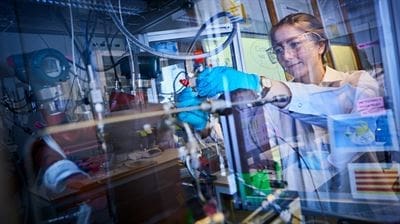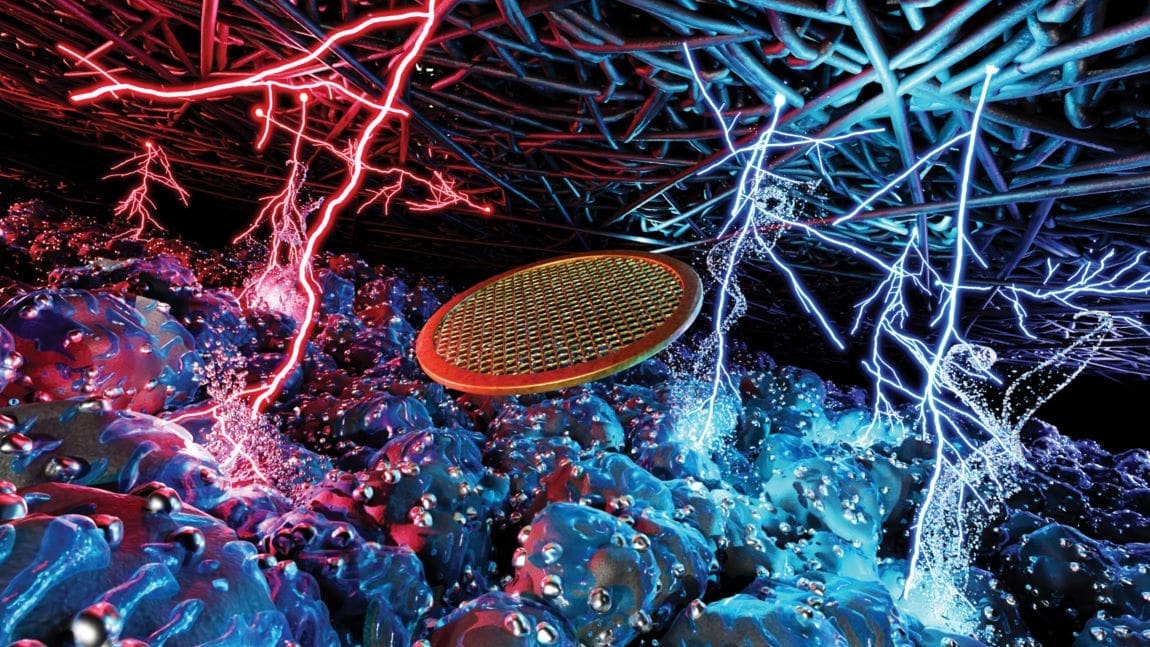By Chalmers University of Technology
More efficient and longer-lasting fuel cells are essential for fuel cell-powered heavy-duty hydrogen vehicles to become an alternative to combustion-fueled counterparts. Researchers at Chalmers University of Technology, Sweden, have developed an innovative method to study and understand how parts of fuel cells degrade over time. This is an important step towards improving the performance of fuel cells and making them commercially successful.

Hydrogen is a fuel alternative that is becoming increasingly interesting for heavy-duty vehicles.
Hydrogen-powered vehicles only emit water vapor as exhaust, and if the hydrogen is produced using renewable energy, they are completely free of carbon dioxide emissions. Unlike battery-powered electric vehicles, hydrogen-powered vehicles do not need to burden the electricity grid, as hydrogen can be produced and stored when electricity is cheap.
For some hydrogen-powered vehicles, propulsion comes from a so-called fuel cell. However, hydrogen-fuel-cell-powered vehicles are limited by a relatively short lifespan because fuel cell components, such as electrodes and membranes, degrade over time. It is this problem that the recent study addresses.
Researchers at Chalmers University of Technology have developed a new method for studying what affects the aging of fuel cells by tracking a specific particle in the fuel cell during use. The team of researchers has studied an entire fuel cell by taking it apart at regular intervals. Using advanced electron microscopes, they have then been able to follow how the cathode electrode degrades in specific areas during the cycles of use.
Previous studies have been done on so-called half-cells, which are similar (but not the same as) half of a fuel cell and are carried out under conditions that differ significantly from the real fuel cell.
Better understanding with new experimental method
“It has previously been assumed that the performance would be affected by the fuel cell being disassembled and studied in the way we have done, but it turned out that this assumption is not correct, which is surprising,” says research leader Björn Wickman, an Associate Professor at the Department of Physics at Chalmers.
The researchers at Chalmers have been able to explore how the material in the fuel cell degrades at both the nano and micro levels and pinpoint exactly when and where the degradation occurs. This provides valuable information for the development of new and improved fuel cells with a longer lifespan.

“From previously only looking at how the fuel cell has aged after use, we have now been able to examine the intermediate stages,” says doctoral student Linnéa Strandberg at Chalmers. “Being able to follow a single, chosen particle within a specific area provided a much better understanding of the degradation processes. Greater knowledge of these processes is an important step toward designing new materials for fuel cells or adjusting the control of the fuel cell.”
New method paves the way for longer-lasting fuel cells
The U.S. Department of Energy (DOE) has pointed out that an improved lifespan for fuel cells is one of the most important goals to reach before fuel cell-powered hydrogen vehicles can become commercially successful. According to the industry, a truck needs to be able to withstand 20,000–30,000 hours of driving over its lifetime, which a fuel cell-powered hydrogen truck cannot achieve today.
“We have now laid a foundation on which to build the development of better fuel cells. Now we know more about the processes that take place in the fuel cell and when they occur during the fuel cell’s lifetime. In the future, the method will be used to develop and study new materials that can give the fuel cell a longer lifespan,” says Björn Wickman.
Fact: How a fuel cell works
The core of a fuel cell consists of three active layers: two electrodes—anode and cathode respectively—with an ion-conducting membrane in the middle. Each individual cell provides a voltage of about 1 volt. The electrodes contain catalyst material, and hydrogen and oxygen are added to them. The resulting electrochemical process generates clean water and electricity that can be used to power a vehicle.
More about the research :
The research group at Chalmers that has developed the method consists of doctoral student Linnéa Strandberg and Associate Professor Björn Wickman, both at the Department of Physics, Victor Shokhen, a former postdoc at the Department of Physics, and Magnus Skoglundh, Professor at the Department of Chemistry and Chemical Engineering.
The research has been presented in three different scientific articles:
- Carbon Support Corrosion in PEMFCs Followed by Identical Location Electron Microscopy , ACS Catalysis, (16 May 2024). DOI: 10.1021/acscatal.4c00417
- Fuel cell electrode degradation followed by identical location transmission electron microscopy, Journal of Material Chemistry A (4 September 2023). DOI: 10.1039/D3TA01303K
- Impact of Accelerated Stress Tests on the Cathodic Catalytic Layer in a Proton Exchange Membrane (PEM) Fuel Cell Studied by Identical Location Scanning Electron Microscopy, ACS Applied Energy Materials (August 18, 2022). DOI: 10.1021/acsaem.2c01790
This project was financially supported by the Swedish Foundation for Strategic Research and the Swedish Research Council and performed within the Competence Centre for Catalysis, which is hosted by Chalmers University of Technology and financially supported by the Swedish Energy Agency and the member companies Johnson Matthey, Perstorp, Powercell, Preem, Scania CV, Umicore, and Volvo Group.
Scanning electron microscopy and transmission electron microscopy were performed at Chalmers Materials Analysis Laboratory (CMAL).
***
Chalmers University of Technology in Gothenburg conducts research and education in technology and natural sciences at a high international level. The university has 3,100 employees, 10,000 students and trains engineers, architects and naval officers. With scientific excellence as a basis, Chalmers develops competence and technical solutions for a sustainable world. Through global commitment and entrepreneurial spirit, we create innovative power, in close cooperation with the rest of society. Chalmers was founded in 1829 and still has the same motto today: Avancez – forward.
Journal Reference:
Linnéa Strandberg, Victor Shokhen, Magnus Skoglundh, and Björn Wickman, ‘Carbon Support Corrosion in PEMFCs Followed by Identical Location Electron Microscopy’, ACS Catalysis 14 (11); (2024). DOI: 10.1021/acscatal.4c00417 | https://doi.org/10.1021/acscatal.4c00417
Article Source:
Press Release/Material by Chalmers University of Technology
Featured image: Researchers at Chalmers have developed an innovative method to study and understand how fuel cells break down with use. This is done with the help of so-called electron microscopy, where materials can be studied Credit: Chalmers University of Technology | Linnéa Strandberg and Victor Shokhen




